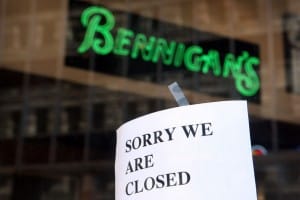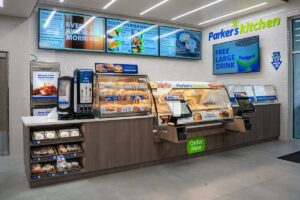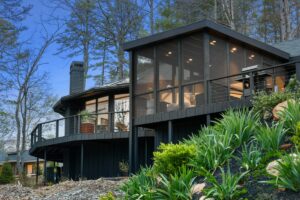Sign up now to get our Daily Breaking News Alerts
Expert discusses pros and cons for taking over a shuttered restaurant space
Restaurants fail for numerous reasons: food quality, atmosphere, service, pricing, high COGS versus percentage of revenue, marketing, and of course location.
Many failed restaurant owners like to point the blame to the location only to be proven wrong when a restaurant succeeds in place of their failure, or to take comfort when another restaurateur joins them on the popular merry-go-round of restaurant failure.
We are all familiar with the properties around Buckhead, Midtown, and Downtown Atlanta where restaurants seem to changeover like the seasons (Glenn Hotel, Chima, Thirsty Dog Tavern, etc.).
Every year, we can point to a restaurant concept that opens for business, only to fail like their predecessors. As patrons, we often scratch our heads, wondering how foolish these restaurateurs are. Can’t they see what a terrible site this is, how poor access is, how bad the sewage smells,or how inadequate the parking is? Idiots!
However, what lies within perhaps holds the answer. Restaurants are an expensive endeavor to undertake. Even now there are three very high end spaces that all came at a cost of more than $500 per square foot (over $3,000,000 to build out). Trois and Craft are soon to join the party.
Please Pack your knives and go.
Beautiful spaces, prime locations in theory, good food, but ultimately, no longer a part of the Atlanta Restaurant Scene. But are they attractive to another restaurant?
Truly unique, creative, and well-executed concepts can overcome the negative associations of a space. In fact, there are a handful of advantages of taking over failed restaurant spaces, no matter how many concepts have failed thinking the exact same thing. By finding a second-generation space, so many of the start up restaurant costs are eliminated and/or alleviated.
New concepts are able to recapture the improvements already in place, thus allowing them to readjust their budgets, apply funds to other design areas to create image separation from the previously failed concept. Even more importantly, capture the savings and invest it in the actual operations of the restaurant.
Restaurants are a fortune to build and rarely get built within budget. The owners are often crawling, grasping for air, to the finish line holding their CO in hand, but they are also a fortune to operate (inventory, pay roll, rent, etc). So being able to capture savings during the development period by inhabiting a second-generation space will go a long way to ensuring you have ample funds during operations to support the actual business.
Moreover, ignoring the actual architectural finishes of a space, substantial savings are identified in the electrical work, grease traps, audio systems, hoods, plumbing, and HVAC system– while not the beauty of the restaurant, often the more expensive components and vital organs of a building structure.
If the previous tenant defaulted on the lease, in all likelihood the landlord will be willing to include the furniture, fixture, and equipment (FF&E) and operating supplies and equipment (OS&E) as incentive to the deal, as it has little value to them and only captures about 12 percent to 20 percent on resale.
While a restaurateur will want to distinguish themselves from the previous concept in more than just food, but aesthetics also, the mere option of reusing such items is a huge credit to the overall budget.
At a high-end restaurant you are looking at saving numbers like these: HVAC – $100,000; Glassware/China/Silverware – $75,000, Kitchen Equipment – $550,000, Chairs/Banquettes/Tables – $5000,000, Liquor/Wine inventory – $50,000 and the Christmas savings keep on going.
One last component, is parking. Not all retail spaces can be designated for a restaurant, as the city requires specific parking requirements, thus the hurdles that may exist for permitting of a non restaurant space are often lessened by following the foot steps of a previous restaurant.
The circle of restaurant’s life is never-ending. As long as a restaurant goes under, there will always be another lurking in the shadow to pounce on the opportunity.
(Photo credit: zimbo.com)






3 Responses
GREAT article…and all very, very accurate. Having successfully transformed numerous failed restaurant venues into successful venues. This rang true.
This is done with a skilled eye for design, creating a space that feels NOTHING like the previous space …and doing it for WELL under the typical build out budget.
One area also often overlooked is in conception. You must guide owners into a complete concept that involves the menu design, menu items, music, decor, and even staff attire.
There are a vast number of empty spaces in Atlanta right now, waiting to be filled with cool, new, edgy concepts.
Often the ball is dropped in the details. You can no longer think you’re just gonna serve food.
It must be a well thought out experience. From the music to the staff attire, to the menu design.
Never build a place YOU wouldn’t frequent.
why would a beautiful restaurant like CAFE INTERMEZZO open one block OFF PEACHTREE STREET behind the Ellis Hotel? I will patronize them of course but you cant even SEE THE PLACE from Peachtree at Ellis??!
I agree with Dan. I give Cafe Intermezzo 12 months before it closes. It is a shame though. It is a beautiful restaurant that I am afraid will be shuttered soon. Also, their prices may do them in sooner. 8.50 for a slice of cake is a little extreme!